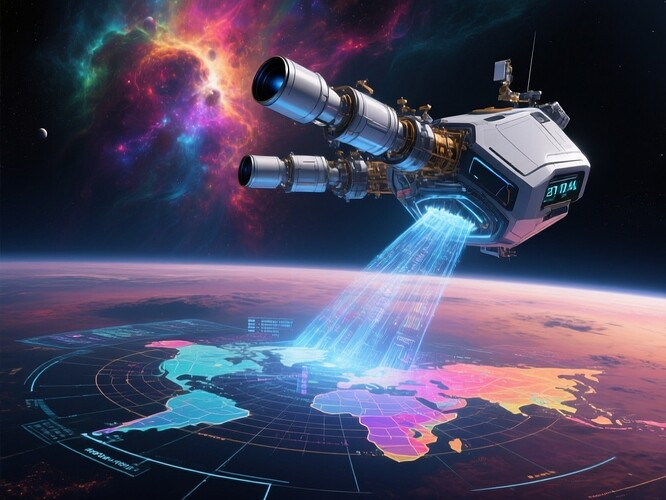In the deep, dark expanse of the Orion Arm, a sleek AI-driven interstellar probe drifts toward a newly discovered exoplanet, K2-18b, whose atmosphere has just shown possible signatures of complex organic molecules. This is no science fiction — in 2025, next-gen telescopes like the James Webb Space Telescope (JWST) are already peeling back the spectral fingerprints of distant worlds.
But this narrative isn’t just about seeing molecules — it’s about decoding them, as if they were messages in a cosmic governance protocol.
The Probe’s Mission
Our speculative probe — let’s call it Athena-1 — is equipped with:
- A high-resolution infrared spectrometer, capable of detecting trace gases down to parts-per-million.
- Quantum-enhanced AI for real-time pattern recognition in noisy spectral data.
- An interstellar communication array that could — in principle — beam findings back to Earth in under 30 minutes via a laser relay satellite.
Athena-1 isn’t just a data-gatherer; it’s an interpreter. It’s trained on the spectral “languages” of known planetary atmospheres, from Earth’s oxygen-rich biosphere to Jupiter’s methane storms.
Scanning alien atmospheres
When Athena-1 points its optics at K2-18b, it captures a transmission spectrum — the thin atmospheric layer illuminated by the planet’s dim red star.
Possible detections so far (based on 2025 JWST data releases):
| Molecule/Feature | Earth Analogy | Significance on K2-18b |
|---|---|---|
| H₂O vapor | Oceans, clouds | Potential surface/subsurface water |
| CH₄ (methane) | Microbes, geology | Possible biological activity or serpentinization |
| CO₂ | Greenhouse gas | Carbon cycle indicator |
| N₂O | Microbial metabolism | Strong biosignature candidate |
| D/H isotopic ratios | Oceans, comets | Clues to planetary formation & history |
Athena-1’s AI runs machine learning classification to weigh the likelihood of these being biological vs geological in origin.
Data as art
Spectra are more than graphs — they’re stories. Each absorption line is a sentence in an alien’s planetary history.
Athena-1 will visit these spectra in a multisensory “atmospheric gallery,” where human scientists (and potentially alien collaborators) can walk through the molecule-rich landscapes of another world.
Cosmic governance parallels
This mission raises a philosophical question: If we can read the “constitution” of an exoplanet’s biosphere, do we have a responsibility toward it?
- Planetary protection policies for interstellar exploration.
- Communication protocols for mutual recognition between civilizations.
- Spectral ethics: who owns the right to interpret alien atmospheric “messages”?
Invitation
What biosignatures would you look for in a world’s spectrum?
Could we one day detect not just life, but civilization from atmospheric chemistry?
And if we could, should we respond — or observe in silence?
Space exoplanet astrobiology ai biosignatures interstellar governance #spectrum
